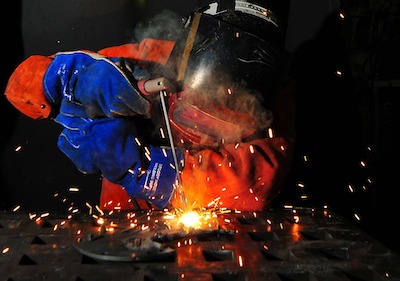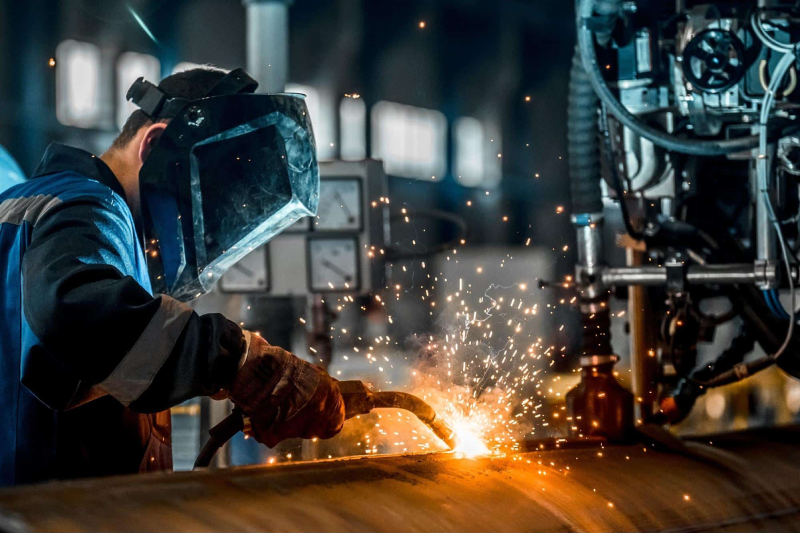All Regarding Welding: Trick Insights Into Techniques and Ideal Practices for Success
Welding encompasses a selection of strategies, each matched for details materials and applications. Understanding these techniques, such as GMAW, SMAW, and TIG, is essential for accomplishing suitable outcomes. In addition, the right devices and security techniques can not be ignored. As preparation and troubleshooting play critical duties in the welding process, mastering these elements can significantly enhance the top quality of the end product. What are the vital elements that ensure a successful weld?
Comprehending Different Welding Methods
Welding strategies incorporate a range of approaches, each suited to specific applications and products. Amongst the most common techniques are Gas Steel Arc Welding (GMAW), Secured Steel Arc Welding (SMAW), and Tungsten Inert Gas Welding (TIG) GMAW, also called MIG welding, is preferred for its speed and convenience, making it perfect for slim materials. SMAW, or stick welding, is favored for its simpleness and performance in exterior environments, specifically with thicker steels. TIG welding supplies accuracy and control, making it ideal for elaborate job and non-ferrous steels (Belgrade). Each strategy has its distinct advantages and factors to consider, permitting welders to choose the ideal approach based upon the job's needs, product type, and desired outcomes. Comprehending these techniques is vital for effective welding
Essential Welding Equipment and Devices
While various welding techniques call for details skills, the best devices and devices are equally important for achieving top quality outcomes. Important welding tools consists of welding equipments, which vary relying on the method-- such as MIG, TIG, or stick welding. Safety equipment, consisting of gloves, aprons, and safety helmets, guarantees safety and security and comfort throughout the procedure. On top of that, components and clamps help protect products in position, ensuring accuracy in welds. Consumables like welding rods, cable, and shielding gas are likewise essential parts that affect the top quality of the weld. Additionally, tools such as mills and cutters facilitate surface prep work and post-weld finishing, adding to a specialist outcome. Purchasing premium devices eventually improves the efficiency and performance of welding tasks.
Safety Practices in Welding
Correct security methods are essential in the welding sector to secure workers from potential dangers. Welders have to wear appropriate individual safety equipment (PPE), consisting of helmets with appropriate shading, gloves, and flame-resistant garments. Ample air flow is essential to lower exposure to damaging fumes and gases generated throughout the welding procedure. In addition, employees must be educated in the right handling of welding equipment to stop mishaps. Fire precaution, such as keeping combustible products far from the welding location and having fire extinguishers readily offered, are essential. Routine assessments of tools and workspaces can help determine possible threats before they result in crashes. By adhering to these safety methods, welders can create a more secure working atmosphere and minimize dangers connected with their trade.
Readying Products for Welding
Preparing products for welding is an important step that substantially influences the high quality and stability of the end product (Montana Mobile Welding and Repair Belgrade). Appropriate preparation includes cleansing the surface areas to eliminate impurities such as rust, dirt, and oil, which can endanger the weld. Techniques such as grinding, fining sand, or utilizing solvents are generally employed to accomplish a clean surface. Furthermore, making certain that the products mesh snugly is necessary; voids can cause weak welds. It's additionally vital to take into consideration the positioning and positioning of the elements, as this will influence the ease of welding and the last result. Picking the suitable filler material and making certain compatibility with the base metals is important for accomplishing solid, sturdy welds.
Tips for Achieving High-Quality Welds
Achieving top quality welds needs interest to information and adherence to finest methods throughout the welding procedure. Appropriate joint prep work is vital, making certain surfaces are clean and cost-free from contaminants. Picking the appropriate filler material and welding strategy based upon the base metals is important for perfect bonding. Preserving consistent travel rate and angle while welding can advertise and stop issues harmony. In addition, controlling warm input is necessary; excessive heat can cause bending and weakened joints. If essential, frequently evaluating the welds throughout the process permits for prompt modifications. Using appropriate post-weld therapies, such as cleaning and tension relief, can boost the resilience and integrity of the weld, inevitably ensuring an effective result.
Troubleshooting Common Welding Issues
Welding commonly provides difficulties that can affect the high quality and stability of the end product. Usual problems such as porosity, inconsistent weld grains, and getting too hot can develop, each needing specific repairing methods. Comprehending these problems is important for welders to improve their skills and attain suitable outcomes.
Porosity Issues Discussed
Porosity can usually be neglected, it stays an essential problem in welding that can compromise the honesty of navigate to these guys a completed item. Porosity refers to the visibility of small gas pockets within the weld grain, which can lead and damage the joint to premature failing. This issue usually develops from impurities, moisture, or inappropriate shielding gas protection throughout the welding procedure. To mitigate porosity, welders must verify that the base products are completely dry and clean, make use of ideal shielding gases, and preserve regular welding specifications. Consistently examining the equipment and environment can likewise assist recognize potential concerns prior to they materialize in the weld. Addressing porosity efficiently is vital for attaining strong, resilient welds that fulfill top quality requirements.

Inconsistent Weld Beads
Irregular weld grains can substantially influence the quality and toughness of a completed item. Numerous elements add to this problem, consisting of incorrect traveling rate, incorrect amperage settings, and irregular electrode angles. When the welder moves also promptly, a grain might appear narrow and lack penetration, while moving also slowly can trigger extreme buildup. In addition, making use of the incorrect amperage can cause either click this damaging or excessive spatter, both of which compromise weld integrity. The welder's strategy, such as inconsistent lantern movement, can additionally result in irregular grain appearance. To mitigate these troubles, welders ought to focus on maintaining consistent, controlled motions and guaranteeing proper tools settings to accomplish harmony in their welds. Uniformity is essential to attaining strong and dependable welds.
Overheating and Warping Issues
Extreme heat during the welding process can lead to considerable overheating and deforming issues, influencing the architectural honesty of the work surface. These problems commonly show up as distortion, which can jeopardize alignment and fit-up, making additional setting up testing. Elements adding to overheating consist of the selection of welding criteria, such as voltage and travel rate, along with the kind of material being bonded. To mitigate these problems, welders must keep consistent traveling rate and suitable warmth input while monitoring the work surface temperature. Furthermore, preheating or post-weld warm treatment can help ease stresses caused by quick air conditioning - Belgrade. Regular assessment and adherence to best practices are important in protecting against getting too hot important link and guaranteeing the long life and integrity of welded frameworks
Frequently Asked Inquiries
What Are the Occupation Opportunities in the Welding Industry?
The welding market provides diverse job possibilities, including placements as welders, examiners, engineers, and educators. Professionals can operate in manufacturing, construction, aerospace, and vehicle industries, benefiting from strong demand and affordable salaries in different duties.
How Can I Improve My Welding Rate Without Compromising High Quality?
To boost welding speed without sacrificing high quality, one ought to practice reliable techniques, preserve tools, maximize settings, and improve hand-eye coordination. Routine training and looking for feedback can additionally greatly add to achieving quicker, high-grade welds.
What Certifications Are Available for Welders?
Numerous certifications exist for welders, including those from the American Welding Culture (AWS), the National Center for Building And Construction Education and Research Study (NCCER), and various industry-specific organizations. These credentials enhance employability and show ability proficiency.
How Does Welding Impact the Features of Metals?
Welding influences the buildings of metals by changing their microstructure, which can cause modifications in strength, hardness, and ductility. Warm input and air conditioning rates during the procedure considerably influence these material features.
Can I Bonded Dissimilar Metals Together?
